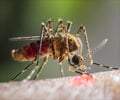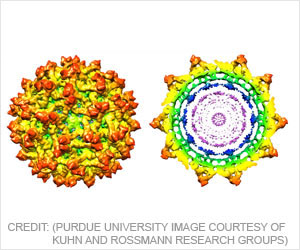Highlights
- Zika virus increases the risk of microcephaly in the developing fetus.
- Babies with microcephaly can have a wide array of problems including a small brain and head, developmental delays, seizures, vision and hearing loss and feeding difficulty.
- The Asian lineage Zika virus halted the proliferation of brain stem cells and hindered their ability to develop into brain nerve cells.
Since a normal brain develops from simple cells called stem cells that are able to develop into any one of various kinds of cells, the UTMB team deduced that microcephaly is most likely linked with abnormal function of these cells.
There are two main lineages of the virus, African and Asian. Recently, the UTMB team found that only the Asian lineage has been linked with microcephaly.
Using cells donated from three human fetal brains, the researchers established a method of investigating how Zika alters the production, survival and maturation of brain stem cells. They focused on the impact of the Asian lineage Zika virus that was involved in the first outbreak in North America in late 2015.
"We discovered that the Asian lineage Zika virus halted the proliferation of brain stem cells and hindered their ability to develop into brain nerve cells," said Ping Wu, senior author on the study and UTMB professor in the Department of Neuroscience & Cell Biology.
Wu further stated, "the unique system containing stem cells from three donors will allow us to dissect molecular mechanisms underlying Zika virus-induced brain malformation."
Reference
- Ping Wu et al., Differential Responses of Human Fetal Brain Neural Stem Cells to Zika Virus Infection, Stem Cell Reports (2017) http://dx.doi.org/10.1016/j.stemcr.2017.01.008.
Source-Medindia














